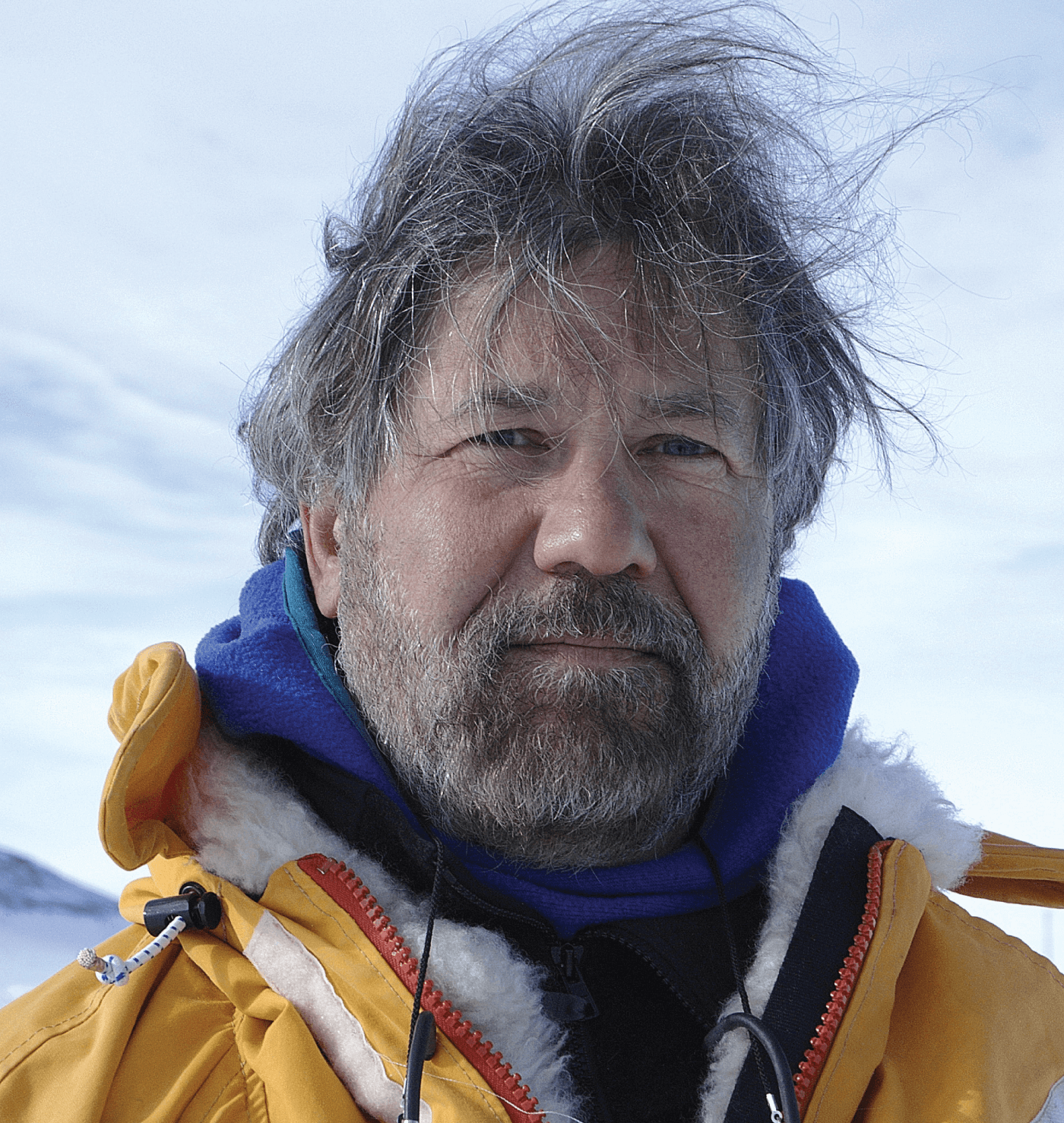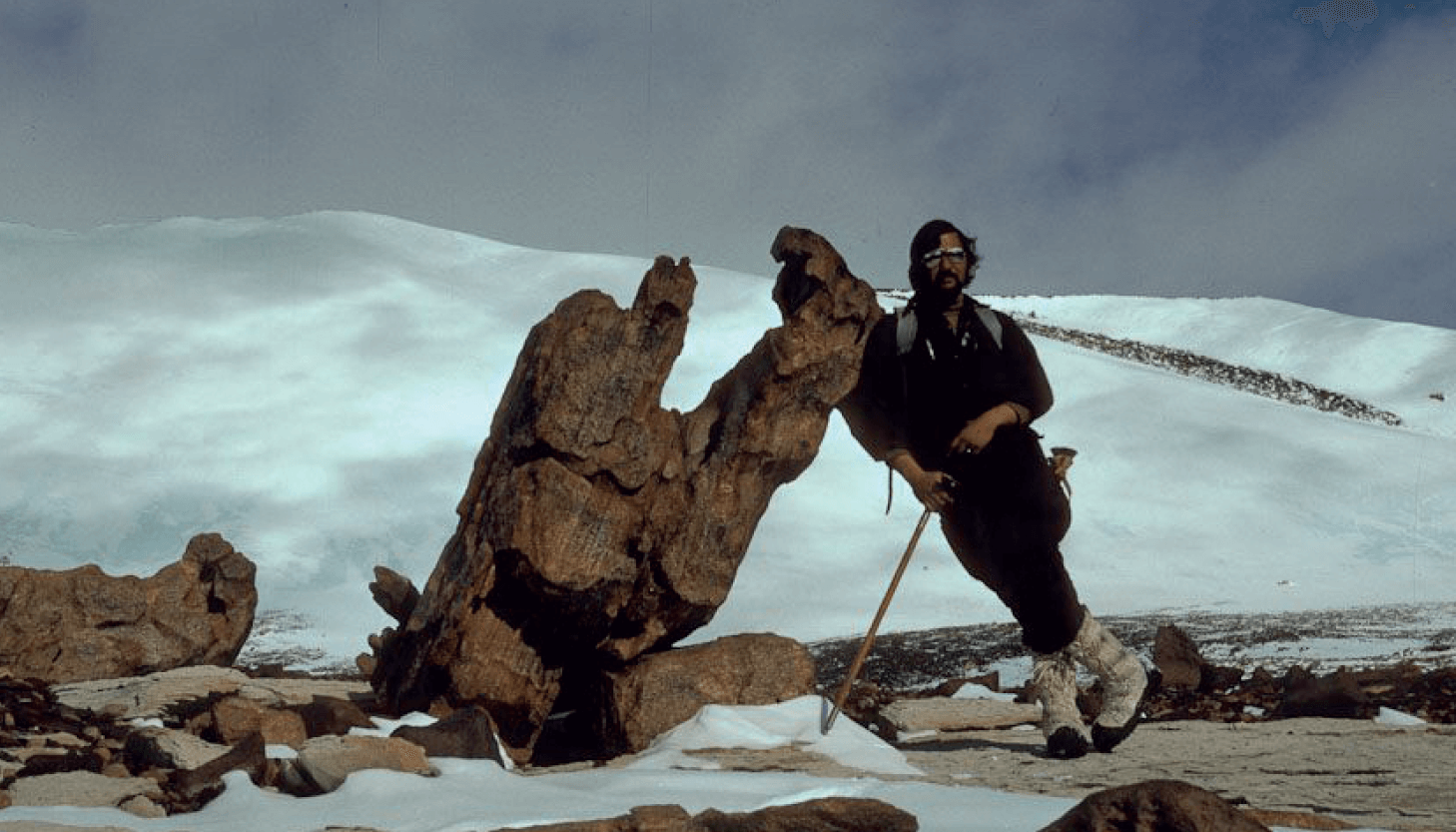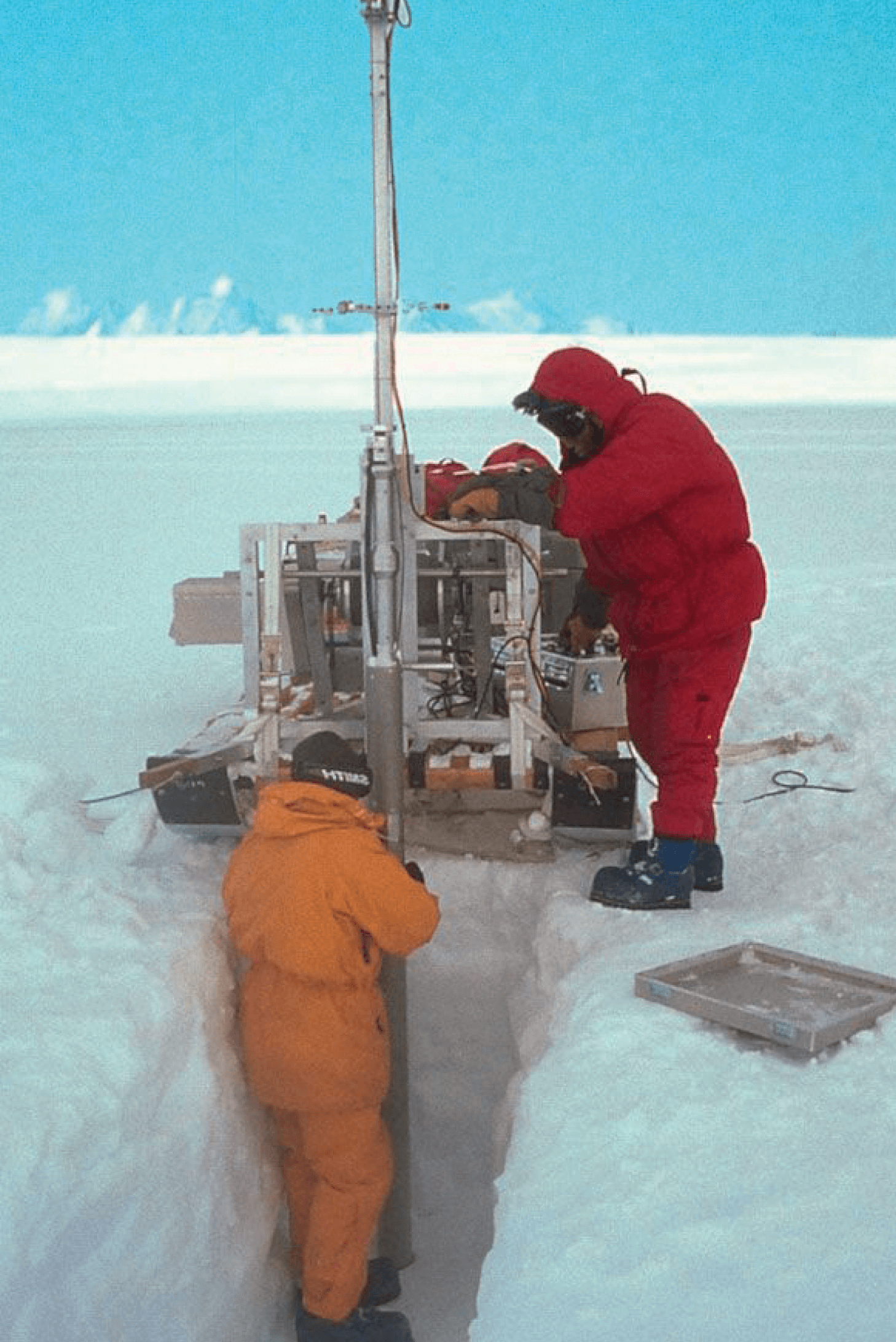
Back in June, we spoke to Paul Mayewski about his most recent Colle Gnifetti project studying 4,000 years of European climate history. This time, we sat down with him to learn more about his life and journey to becoming an internationally acclaimed glaciologist, climate scientist, and polar explorer…
I’ve always wanted to be an explorer. Although originally from Edinburgh, Scotland, I spent much of my early school days in New York City, where I frequently went to the Museum of Natural History. It essentially got me thinking about distant places. By the time I went to college, my goal was to try to go to the Antarctic. My second year college professor showed a picture of Antarctica in one of his lectures and I asked him if he would take me there. Initially, he said no because he hadn’t been in years – but eventually he wrote a new proposal and there I was! I’ve been exploring these remote regions ever since.

I’ve always been driven by the desire to go to remote places and simply explore, but it occurred to me as the years went on that there were also other types of exploration – namely, scientific exploration – and that these could really add, I hoped, significant value to people’s lives. I actually say that I didn’t really become a “scientist” until at least 10 years after I got my PhD. My goal prior to that, rather selfishly, was just to go to these remote areas and have an adventure. But during my second expedition in the Antarctic, I was tasked with showing a US Government official around some of the area in a helicopter. I told him that I loved what I did, but that I realized it cost a lot of money and I was starting to feel guilty about just having a great time exploring. He told me if I really felt that way I could surely find some way of applying my research to have an impact on people’s lives.
I really took this to heart, and it’s part of the reason I started going to Asia – I thought if I was really going to do something that made a difference to people, I needed to work in areas where people were living. Eventually I developed a research centre at my old university, and it just got more and more exciting. The reason I got involved in ice cores specifically is all down to one student. By the late 1970s I was running a course on glaciers in Canada. I asked each of them to write a proposal about what they wanted to do, and we’d figure out how to do it. One of these students said she wanted to work on ice cores – it turned out to be a brilliant suggestion because it’s what I’ve been doing ever since!
Well, we certainly weren’t the first to do chemical fingerprinting of air masses – but we were the first to demonstrate how it could be applied to ice cores. I led an expedition in 1980 to an extremely remote part of the Himalayas in Ladakh, India, which is right on the border with Pakistan. We actually used to see sparks at night where the Soviet-Afghan war was going on. Anyway, we were attempting to reach a site that nobody had actually climbed since 1910. The sole reason I knew of the site was because I saw a picture in a book by Fanny Bullock Workman, a famous climber at the turn of the last century. I thought it would be a good place to drill an ice core!
However, it turned out it wasn’t an easy place to get to. We weren’t allowed maps, or any form of communication because of the war, and it took us over 6 weeks just to reach the site from the US. In any case, we got there in the end, and we managed to drill the ice core. People really weren’t drilling ice cores at these high altitudes at this point. I was looking around one day with the team and we saw snow coming from the Tibetan plateau in one direction, and snow coming from the Indo-Gangetic Plain in the other. Intriguingly, they came together and precipitated down the mountain, so we decided to take a sample of this snow. We climbed down the mountain taking samples along the way, from 20,000 feet to 10,000 feet, and climbed up again for the night.
We hoped that the two air masses would have different chemical compositions and sure enough, we could see the different chemical fingerprints once we completed the measurements back in our university lab. The Tibetan air had a colder chemical signal as it comes from a higher source, and it had a lot of dust in it – as expected from the massive dry Tibetan plateau. The Indo-Gangetic one had a marine chemical signal since this air comes from the Bay of Bengal, an agricultural signal from all of the farming in the region, and signs of pollution. So that’s really when we decided to apply the technique to ice cores as well.
Well, chemically fingerprinting these ice cores allowed us to prove that acid rain was actually something produced by human activity. Back in the 1980s, discussions around acid rain were the same as greenhouse gas discussions today – some people thought it was natural and humans weren’t to blame. But we could show that, in fact, the emissions from both North America and Europe absolutely tracked the levels of sulfuric and nitric acid that we found in the ice cores from Greenland. We even went back later to take more ice cores and could show that the Clean Air Acts worked.
And that’s just one (admittedly impressive) example, we’ve also shown that open pit mining in Australia over a recent, 35-year period increased the levels of uranium in the Antarctic Peninsula. We used ice core analysis to show that the Chernobyl nuclear accident made its way to the South Pole, what path it took, and how long it took to get there. Years ago, an Egyptologist approached me and wondered whether there was any reason why some dynasties worshipped the Sun more than others. They could see from the hieroglyphs that at some times the people wore a bit more clothing while worshipping the sun, and at other times they wore less and didn’t seem to worry about the sun so much. It turned out we could show from our ice core data that there were in fact warmer and cooler times in Egypt that correlated with the hieroglyphs.
We’ve now developed software at our centre that allows us to correlate the upper part of these records with instrumental climate data. So we can now understand not just what chemistry is present – which is important for air quality and a variety of other things – but also convert this into information about changes in temperature, precipitation, sea level, pressure and wind patterns. So there really is just a wealth of information you can get from these cores.

There have been a few! Obviously, as an explorer, there are lots of risks involved with traveling to remote areas. Crevasses are a serious danger – although not on my own expedition, I’ve lost friends. We once spent 17 days pinned down on a mountain because of wind storms. Access to food can often be an issue. Frostbite… Lightning! When you’re on top of a mountain, no matter what you do you’re going to be one of the highest points out there. So that can be pretty scary. Earthquakes; we were in the Andes when it had one of its biggest quakes in 2014. I’ve also found myself in war zones because of my work. Of course, I do get scared, but I love the job.
It’s become a lot more popular! There are so many applications now, and the younger generation are becoming increasingly interested in climate and the environment – it’s great. It’s also become a lot more diverse, at least in terms of gender – when I started working in Antarctica there were very few female graduates in the field and women were actually not even allowed to visit the US or British bases in the Antarctic. Now, in our institute, slightly more than half of all our graduate students are women.
Go for it! I want young people to realize that scientists – or explorers – are real people too. Yes, they are ambitious and driven, but they also have a lot of other things going on and they too probably never thought they’d end up in these environments. Look at what you love doing, combine your interests, and seek opportunities. The vast majority of scientists today understand that climate change is caused primarily by humans – but many people think that’s the end of the story. It’s not. We’re still learning so much about our climate system, and there are going to be surprises in the future. It’s vital that the younger generation are inspired to tell this constantly evolving story about our climate – because there’s tonnes more to explore.




